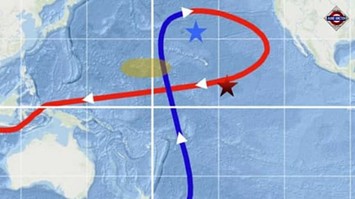PREVIOUS
Beryllium-10 in Pacific Ocean
February 24 , 2025
302 days
791
0
- The scientists have detected the unexpected accumulation of Beryllium-10 in the samples collected from the Pacific seabed.
- Beryllium-10 is a rare radioactive isotope produced by the cosmic rays in the atmosphere that can provide valuable insights into the Earth's geological history.
- The radiocarbon is dating which is limited to samples younger than 50,000 years.
- Beryllium-10 has a half-life of 1.4 million years.
- So, it is allowing it to be used for dating geological events over millions of years.

Leave a Reply
Your Comment is awaiting moderation.


